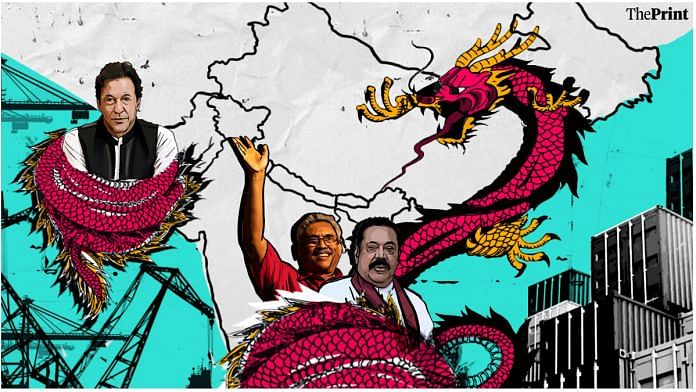Two countries in the neighbourhood, Pakistan and Sri Lanka, signed up for massive Chinese debt-funded infrastructure projects, slipped into economic crisis, and now are caught in political turmoil. In a third country, Myanmar, the Chinese have moved back in after the military coup 14 months ago, and are pushing projects for an economic corridor.
In the Maldives too, Chinese-funded projects and loans have risen and fallen with changes of government. Estimates of the Maldives debt to China vary sharply — the opacity is typical because China has a history of hiding loans as trade credit or by routing them through special purpose vehicles. And Chinese debt isn’t cheap; interest rates seem to be about three times what other countries charge on bilateral aid.
The Americans have coined a term for the phenomenon — ‘debt-trap diplomacy’. The country in the region that has done well, Bangladesh, has been cautious about Chinese-funded projects. Despite having a larger economy than Pakistan, Bangladesh’s exposure to Chinese debt-funded projects is less than a fourth of Pakistan’s. Nepal too has been cautious. Among the countries in the region, the ones in turmoil are those with the greatest exposure to Chinese debt.
And yet, putting all the blame on China would be misdirected. In both Pakistan and Sri Lanka, long-term economic mismanagement has been the primary problem, making them vulnerable to the fallout of Covid and the Ukraine war.
Pakistan’s mishandling of its economy, with 13 loans from the International Monetary Fund (IMF) over 30 years (with most loan programmes called off mid-way for failure to fulfil loan conditions), is well known. The latest $6-billion IMF loan is also on hold, and China has to deal with Pakistan’s requests to step up to the plate. It has refused to change the onerous terms of its project loans but, as the de facto lender of last resort to a client state, has reluctantly picked up the tab when others like Saudi Arabia have turned away. Pakistan on its part is not shy of playing the loan addict: Imran Khan recently asked for a last-minute roll-over of $4.2 billion given as “trade credit”. Even as China agreed, Khan asked for more than doubling the credit limit. China is Pakistan’s biggest creditor.
Also Read: Praise for Imran, blame for India – how Chinese experts spin crises in Pakistan, Sri Lanka
For all that, Sri Lanka’s is the more egregious story, with the tax-to-GDP ratio having dropped by a third in three years as rates got slashed. Inevitably, the country’s credit ratings suffered, budget deficits soared to an astonishing 14 per cent of GDP, and the roll-over of foreign loans (used unwisely to fill the fiscal gaps) went from difficult to impossible — leading to the foreign exchange crisis and collapse of the currency.
Bizarrely, the Rajapaksa clan embarked overnight on country-wide organic farming while banning chemical fertiliser. Buoyed by endorsement from organic farming champions like Vandana Shiva, the government ignored the evidence that organic farming is only a boutique solution for those with the budgets for expensive food. Faced with a disastrous harvest, it has retraced its steps, but now has no dollars to import fertiliser. Grain is being shipped from India and, yes, Bangladesh.
What is China’s role and responsibility? Like a sharp moneylender, it stepped in where it saw opportunity and picked targets carefully. Projects and loans went to resource-rich or strategically-placed countries, 70 per cent of which did not have a good credit rating or any rating at all, and which therefore had few, if any, alternative sources of external finance. It protected its interests by holding project assets as collateral, taking over quite a few. Lending has therefore been followed by asset-grab. Co-option of political leaders (like Sri Lanka’s Rajapaksa family) was a necessary component of the strategy.
Still, China exacerbated but did not mostly cause the problem, whose roots lay in the borrowing countries’ broken politics and economic mismanagement. Chinese loans may even have solved some problems — like Pakistan’s perennial power shortages. But without associated reforms, even good projects become financial millstones. That is why privately-funded infrastructure projects are often a bad idea, and foreign-funded projects with costly loans much worse. If you are stupid enough to undertake such projects, why blame Beijing?
By special arrangement with Business Standard
Also Read: The role China played in pushing Sri Lanka into a debt trap & what India can do to help






